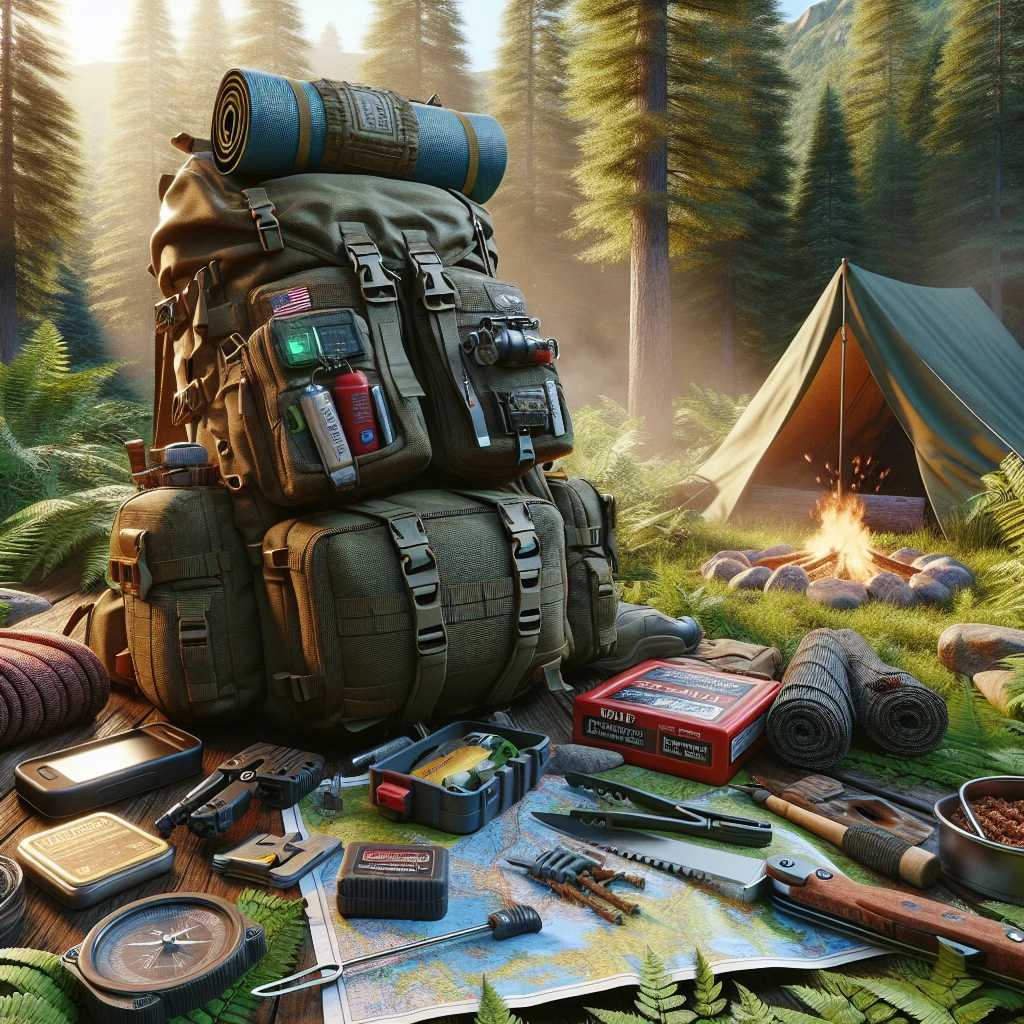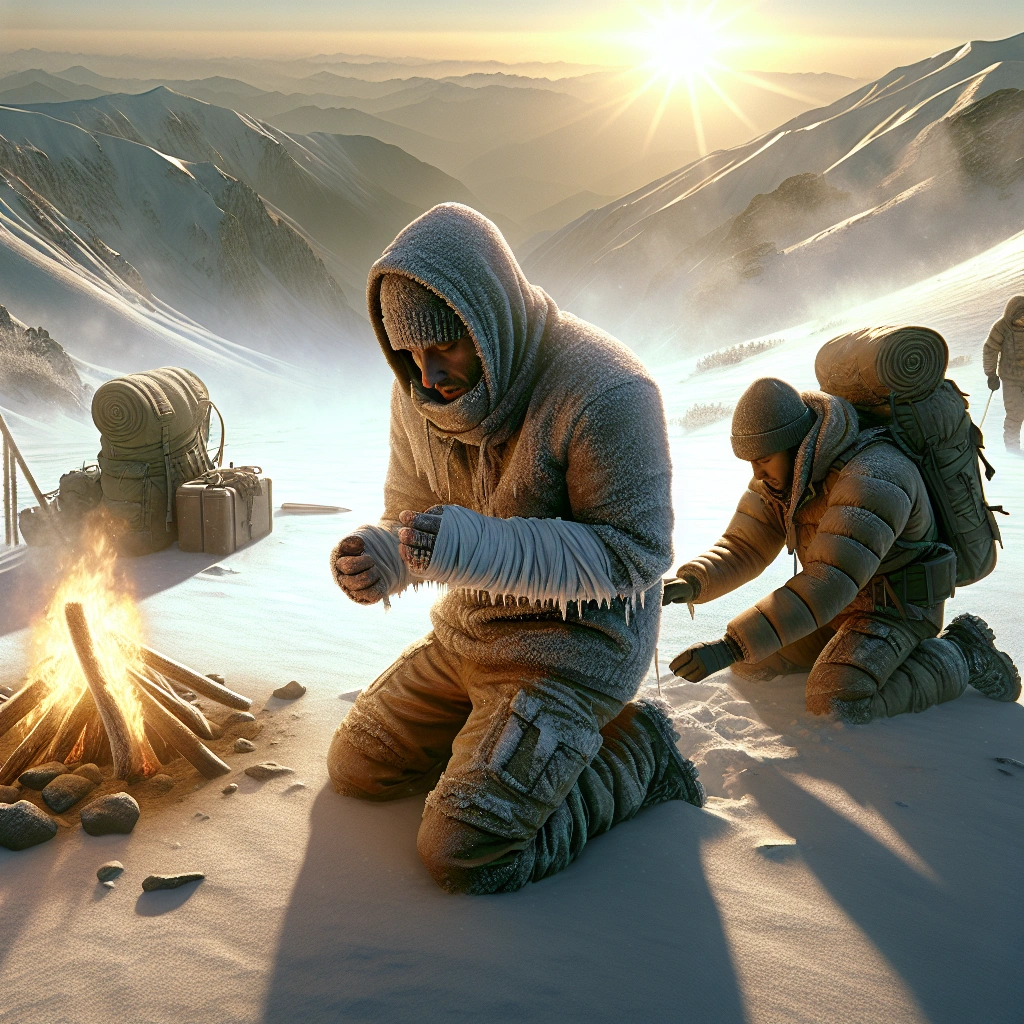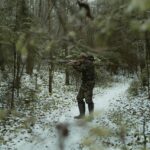

Treating outdoor injuries is crucial for anyone who spends time in the wilderness or engages in outdoor activities. The most common outdoor injuries include sprains, fractures, cuts, scrapes, and blisters.
According to national estimates, the annual rate of outdoor recreational injuries is 72.1 per 100,000 population, with males accounting for 68.2% of the injuries. These statistics highlight the importance of being prepared to treat outdoor injuries effectively.
Check out this Youtube video: Learn essential skills for treating outdoor injuries in the “Girl Scout Activity Zone: Cadettes (Grades 6-8) – First Aid” video, perfect for anyone interested in wilderness first aid and emergency preparedness.
Basic First Aid Skills
Importance of basic first aid knowledge
Having basic first aid knowledge is crucial, especially when it comes to treating outdoor injuries. In outdoor activities, accidents are bound to happen, and knowing how to administer basic first aid can make a significant difference in the outcome. Whether it’s a minor cut, a sprain, or even heatstroke, having the right knowledge and skills can prevent a situation from escalating into something more severe.
Understanding the basics of first aid empowers individuals to take immediate action in emergency situations. It can mean the difference between a swift recovery and a prolonged or worsening condition. With outdoor activities, access to professional medical care might be limited, making basic first aid knowledge even more valuable.
Moreover, being equipped with first aid skills fosters a sense of responsibility towards the safety and well-being of oneself and others during outdoor expeditions. It instills a greater sense of confidence and preparedness, ensuring that individuals can turn unforeseen mishaps into manageable situations.
Essential first aid supplies for outdoor activities
When venturing into the outdoors, it’s imperative to carry a well-stocked first aid kit that caters to potential injuries and emergencies. The following table outlines the essential supplies that one should have in their first aid kit for outdoor activities:
| Item | Purpose |
|---|---|
| Tourniquet | Control severe bleeding |
| Thermometer | Monitor body temperature |
| CPR Shield | Provide barrier protection during CPR |
| Chest Seal | Manage chest injuries and puncture wounds |
| Suture Kit | Close and protect deep cuts and wounds |
| Survival Blanket | Retain body heat and protect from the elements |
| Whistle | Signal for help in emergency situations |
| Light Source | Illuminate surroundings and navigate in the dark |
The items listed above ensure that individuals are equipped to handle a range of potential injuries and emergencies while engaging in outdoor activities. Properly preparing for such situations enhances safety and peace of mind for everyone involved.
Burns and Sunburns
Causes of burns and sunburns
Burns and sunburns can occur when the skin is exposed to excessive UV rays or direct contact with fire, hot liquids, steam, or other sources of heat. Prolonged exposure to the sun, especially during peak hours, can lead to skin damage and sunburn.
Moreover, surfaces like snow, sand, and water can reflect UV rays, intensifying their impact on the skin and increasing the risk of burns and sunburns.
First aid treatment for burns and sunburns
First aid for burns and sunburns includes immediate cooling of the affected areas with cool compresses or a gentle shower, avoiding the use of harsh soaps. Applying aloe gel can provide soothing relief, while it’s crucial to avoid using creams or lotions that may trap heat within the skin.
For sunburns, taking a pain reliever, moisturizing the skin, and staying hydrated are essential steps in the first aid process. It’s crucial to handle blisters carefully and refrain from using numbing medications containing benzocaine or lidocaine.
Prevention tips for avoiding burns and sunburns
Preventing burns and sunburns involves proactive measures such as limiting sun exposure during peak hours, using sunscreen with a high SPF, wearing protective clothing, and seeking shade when outdoors for extended periods. Avoiding direct contact with hot surfaces or liquids and handling hot objects cautiously can significantly reduce the risk of burns.
Additionally, educating children about sun safety and keeping them away from hot liquids and objects is pivotal in burn prevention strategies.
Frostbite and Hypothermia
Symptoms and causes of frostbite and hypothermia
Frostbite occurs when skin and other tissues freeze due to extreme cold. Its symptoms include white or grayish-yellow skin, numbness, and firm or waxy skin. Hypothermia, on the other hand, happens when the body’s core temperature drops below normal due to prolonged exposure to cold. Symptoms include shivering, confusion, slurred speech, and drowsiness.
First aid treatment for frostbite and hypothermia
For frostbite, it’s crucial to warm the affected area gradually, using warm water (100–105 degrees F), and avoid rubbing or massaging the area. Clothes should be loosened, and dry, sterile dressings may be used.
If fingers or toes are affected, inserting dry gauze between them helps. For hypothermia, getting the person to a warm place, protecting from further exposure, and gently rewarming are essential.
In cases of severe hypothermia, emergency medical help is crucial.
Prevention tips for avoiding frostbite and hypothermia
To prevent frostbite and hypothermia, several measures can be taken. Seeking shelter from cold, wind, and precipitation is a primary step.
Adding warm clothing layers, eating carbohydrates, keeping the body hydrated with fluids, and continuous movement are essential. Removing wet clothes and protecting the body from exposure play a crucial role in preventing these cold-weather injuries.
Deep Cuts and Wounds
How to identify and treat deep cuts and wounds
When treating outdoor injuries, it’s crucial to identify and treat deep cuts and wounds promptly to prevent complications. First, assess the severity of the wound by examining its depth, size, and location. Deep cuts may penetrate multiple layers of skin, potentially exposing underlying tissues or organs. To treat deep cuts, start by gently applying pressure to the wound using a clean cloth to control bleeding. Rinse the wound with clean water to remove dirt and debris that may lead to infection. Use an antibacterial ointment to reduce the risk of infection before covering the wound with a sterile bandage.
Importance of cleaning and dressing wounds properly
Proper cleaning and dressing of wounds are imperative for preventing infection and promoting optimal healing. After identifying a deep cut, cleaning the wound thoroughly with mild soap can help eliminate bacteria and reduce the risk of infection. Then, pat the area dry and apply an antiseptic solution to further disinfect the wound. When dressing the wound, ensure that the bandage covers the entire area to provide protection and prevent exposure to contaminants. Regularly changing the bandage and maintaining cleanliness around the wound is essential to ward off infection and facilitate the healing process.
When to seek professional medical help for deep cuts
While minor cuts and wounds can often be managed at home, certain circumstances warrant seeking professional medical assistance. If a deep cut is extensive, continues to bleed profusely, or involves a foreign object embedded in the skin, medical attention should be sought immediately. Additionally, deep cuts that result from animal bites, rusty objects, or dirty surfaces require medical evaluation to prevent potential complications such as tetanus and infection. Signs of infection such as redness, swelling, warmth, and pus formation also indicate the need for medical intervention to ensure prompt treatment and recovery.
Blisters
Understanding the causes and prevention of blisters
Blisters can be caused by several factors like burns, sunburns, friction (from ill-fitting shoes), atopic dermatitis, and impetigo. During physical activities, it’s recommended to wear moisture-wicking, loose-fitting clothes to avoid friction and chafing.
Bandages and moleskin also serve as effective preventive measures to protect problem areas like feet and thighs.
How to treat blisters in the wilderness
When treating blisters in the wilderness, it’s essential to keep the affected area clean and dry. Popping blisters should be avoided to prevent infection.
Applying antibiotic ointment and then covering the blister with a bandage can aid in the healing process. It’s crucial to reduce friction on the blistered area by using moleskin or soft bandages.
Additionally, consider taking pain relievers if necessary to alleviate discomfort during wilderness expeditions.
What to keep in a blister first aid kit
A comprehensive blister first aid kit should contain essential items such as Victorinox Swiss Card Micro Scissors, BodyGlide Foot Anti Blister Balm, Compeed Blister bandages, and Metatarsal pads & bandages. These items assist in both prevention and treatment of blisters.
Including blister pads, bandages, or moleskin is crucial for preventing blisters, while padding can protect existing blisters. It’s also beneficial to have sports tape, gel bandages, and paper tape as additional options in the first aid kit.
Sprains and Strains
First aid treatment for sprained ankles and other sprains
When treating outdoor injuries like sprained ankles, immediate action is crucial. Start with resting the injured area and avoiding any activities that worsen the pain. Apply ice for 20 minutes every 2-3 hours during the first 48 hours to control swelling. Additionally, compress the injured area with a bandage to provide support and reduce inflammation. Finally, the injured limb or joint should be elevated to minimize swelling and pain. Seeking medical attention for severe sprains is imperative to ensure proper healing.
First Aid Treatment for Sprains and Strains
Upon sustaining a sprain or strain, it’s essential to follow the R. I. C. E. protocol: Rest, Ice, Compression, and Elevation. This method assists in decreasing pain and swelling, facilitating the recovery process.
Tips for preventing sprains and strains during outdoor activities
Preventing outdoor injuries involves proactive measures like ensuring proper warm-ups and cool-downs before and after activities. Engaging in dynamic warm-up routines that target the relevant muscle groups can help minimize the risk of sprains and strains. Adequate rest is also crucial, as well as employing proper footwear and protective gear to provide additional support during physical activities. Maintaining good posture and performance technique also plays a significant role in averting outdoor injuries.
Preventing Outdoor Injuries
Prior to engaging in any outdoor activities, it’s essential to conduct a thorough warm-up and cool-down session. This should incorporate a dynamic warm-up routine, designed to prepare the muscles for the impending physical exertion and reduce the likelihood of injuries.
Importance of rest and recovery for sprains and strains
For a successful recovery from sprains and strains, rest and active recovery are pivotal. Allowing the injured area to rest aids in the repair and rejuvenation of muscles and tissues, while promoting faster healing. Incorporating active recovery through gentle movements and exercises helps increase blood circulation, facilitating the removal of waste products from the injured area. Dedication to proper rest and recovery not only expedites healing but also reduces the risk of future injuries.
Significance of Rest and Recovery
Rest and recovery are instrumental in facilitating the healing process after sustaining sprains and strains. Active recovery, in particular, enhances blood circulation, which supports the removal of waste products from the damaged tissues, contributing to an expedited recovery.
Recommended Amazon Products for Treating Outdoor Injuries
Here’s a curated list of products that can help you treat outdoor injuries with ease. These recommendations are based on functionality, price, and customer reviews.
Hydrogel Burn Relief Dressing


The Hydrogel Burn Relief Dressing is highly recommended for treating burns and sunburns. It provides instant relief and promotes healing of the affected skin.
| Pros | Cons |
|---|---|
| Instant relief from burns | May be expensive |
| Promotes healing | Limited to burn treatment only |
| Easy to apply |
Emergency Survival First Aid Kit


This comprehensive first aid kit is essential for treating various outdoor injuries. It contains all the supplies you need for basic first aid treatment in the wilderness.
| Pros | Cons |
|---|---|
| Comprehensive | May be bulky |
| Portable | Some items may expire |
| Durable packaging |
Compeed Blister Cushions


Compeed Blister Cushions are highly recommended for treating blisters in the wilderness. They provide instant pain relief and protection for the affected area.
| Pros | Cons |
|---|---|
| Instant pain relief | May be pricey |
| Protects the blister | Limited to blister treatment only |
| Durable and waterproof |
Ankle Brace for Sprains


This ankle brace is perfect for treating sprained ankles and other sprains during outdoor activities. It provides excellent support and stability for the injured area.
| Pros | Cons |
|---|---|
| Excellent support and stability | May be restrictive |
| Adjustable compression straps | May not fit all shoe sizes |
| Breathable and comfortable |
Instant Cold Packs


Instant cold packs are essential for treating various outdoor injuries such as sprains, strains, and burns. They provide instant cold therapy to reduce inflammation and relieve pain.
| Pros | Cons |
|---|---|
| Instant cold therapy | One-time use only |
| Portable and convenient | May be too cold on bare skin |
| No refrigeration needed |
Top Recommended Product for Treating Outdoor Injuries
If you’re looking for the best solution for treating outdoor injuries, we highly recommend the Emergency Survival First Aid Kit. Here’s why:
The Emergency Survival First Aid Kit is a comprehensive and portable solution for treating a wide range of outdoor injuries. It contains essential supplies for basic first aid treatment and comes in a durable packaging.
Ready to improve your first aid preparedness? Check out the Emergency Survival First Aid Kit today for the best results!
Frequently Asked Questions
How do you treat outdoor injuries?
What are the most common injuries in the outdoors?
How to avoid injuries during outdoor recreational activities?
What to do if you get hurt in the wilderness?
What is the first aid in common injuries in outdoor activities?
Reference Links
- https://www.healthychildren.org/English/health-issues/injuries-emergencies/sports-injuries/Pages/Sports-Injuries-Treatment.aspx
- https://www.pennmedicine.org/for-patients-and-visitors/patient-information/conditions-treated-a-to-z/hypothermia
- https://www.merckmanuals.com/professional/injuries-poisoning/how-to-care-for-wounds-and-lacerations/how-to-cleanse,-irrigate,-debride,-and-dress-wounds
- https://www.mayoclinic.org/diseases-conditions/frostbite/symptoms-causes/syc-20372656
- https://www.ncbi.nlm.nih.gov/pmc/articles/PMC4579997/









